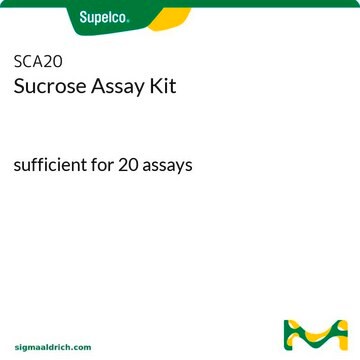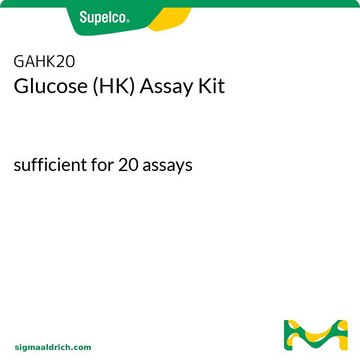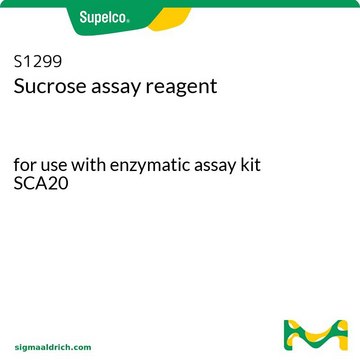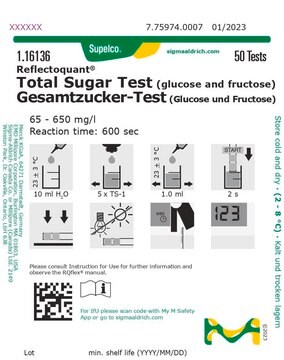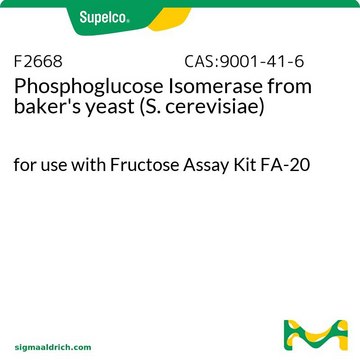FA20
Fructose-Assay-Kit
sufficient for 20 assays
Synonym(e):
Fructose-Testsatz
About This Item
Empfohlene Produkte
Verwendung
sufficient for 20 assays
chemische Klasse(n) des Analyten
sugars (fructose)
Methode(n)
photometry: suitable
Anwendung(en)
food and beverages
general analytical
Lagertemp.
2-8°C
Anwendung
Nur Kit-Komponenten
- fructose standard 500 mg
- glucose assay reagent 1 mL/vial
- phosphoglucose isomerase 1 mL/vial
Ähnliches Produkt
Signalwort
Danger
H-Sätze
P-Sätze
Gefahreneinstufungen
Resp. Sens. 1
Lagerklassenschlüssel
10 - Combustible liquids
WGK
WGK 3
Hier finden Sie alle aktuellen Versionen:
Besitzen Sie dieses Produkt bereits?
In der Dokumentenbibliothek finden Sie die Dokumentation zu den Produkten, die Sie kürzlich erworben haben.
Artikel
Nuclear magnetic resonance (NMR) spectroscopy measures the extent to which a glycan or other molecule distorts a magnetic field.
Protokolle
Enzymatic methods for food analysis are highly specific and offer considerable time and cost savings over other methods, especially from the sample preparation standpoint. We offer a wide variety of convenient kits and reagents for rapid and reliable enzymatic food analysis.
Unser Team von Wissenschaftlern verfügt über Erfahrung in allen Forschungsbereichen einschließlich Life Science, Materialwissenschaften, chemischer Synthese, Chromatographie, Analytik und vielen mehr..
Setzen Sie sich mit dem technischen Dienst in Verbindung.